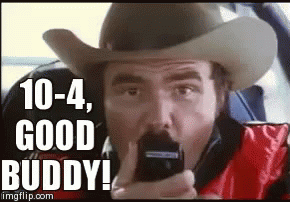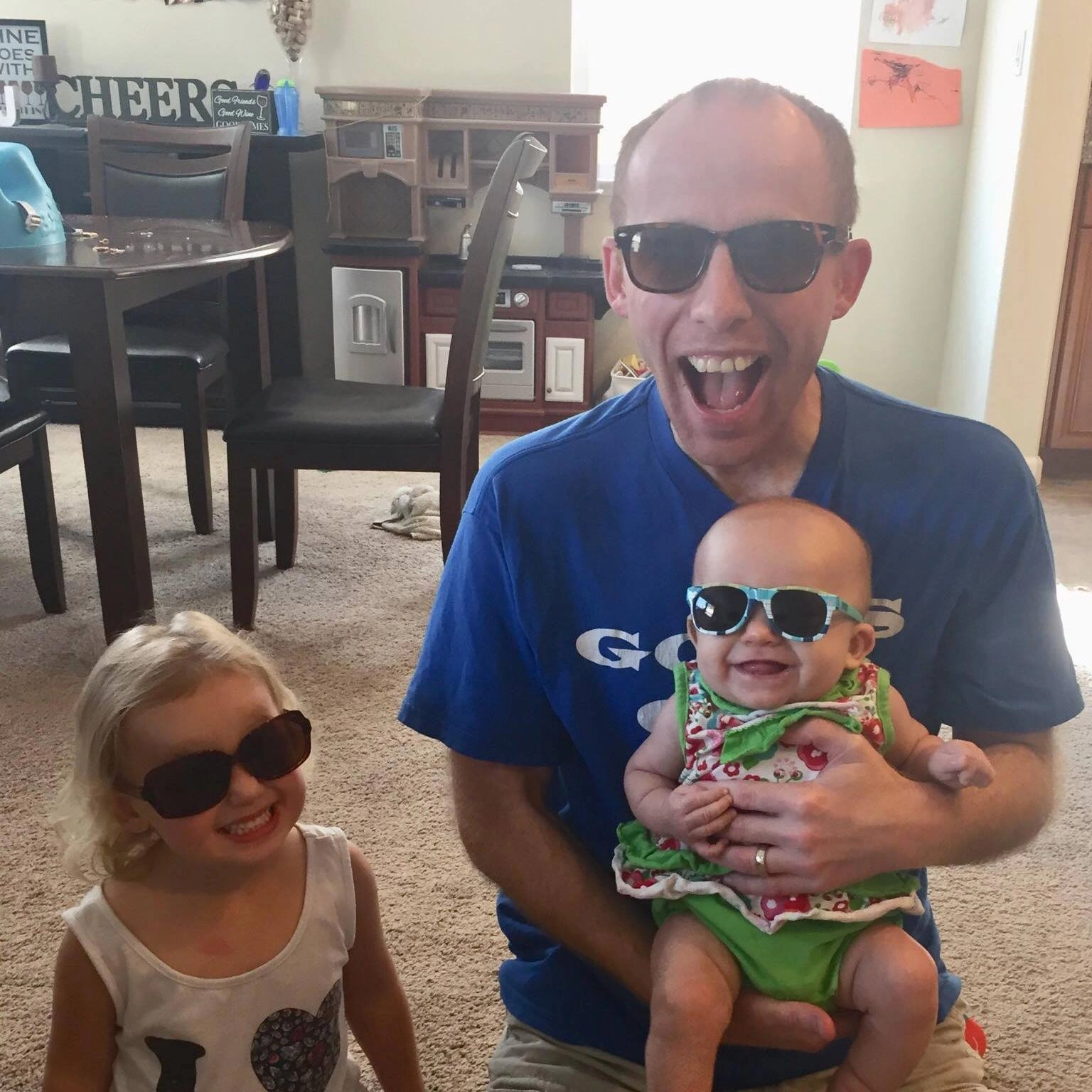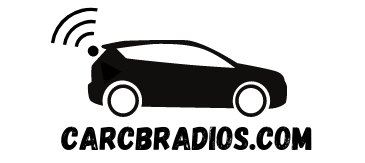By: Jeremy Neisser
What does 10-4 mean?
10-4 is a common radio response used in the United States as a means of acknowledging an incoming transmission. It translates to "I received your message loud and clear" or "understood."
The use of 10-4 has become so widespread among American police officers on police radio that it is sometimes referred to simply as "The Ten Four."
But where did it come from?
In most cases, we really don't know the exact origin of some things because they have been passed down for so long and there are many variations on how they came about.
Such is the case with 10-4. If you're really interested in learning exactly where this term originated, here's what you need to know: Some believe it was first used by railroad workers, while others believe it was first used by hunters and eventually spread to other professions.
You might be interested in: The Top 11 Best CB Radios on the Market

Where did 10-4 originate from?
Any of these are possible origins for 10-4, but there is one thing that's known for certain: It was first documented in the early 20th century. In 1939, Charles Cadell put out a list of "Radio Telephony Hand Signals with Codes" and included this term as an example of how to respond to an incoming transmission.
-You be interested in reading: What are the CB Radio codes
Interestingly enough, none of the sign language that he listed had any real meaning behind them; they were simply common ways to acknowledge or dismiss another conversation. This makes sense since Cadell released his hand signals at a time when most people didn't know what ASL (American Sign Language) was.
If you're ever unsure of what to say on the radio, "10-4" is one good and appropriate option. But if you really want to sound like a professional, try using "affirmative." Just remember though, if someone responds to your transmission with "10-4," it doesn't mean that they agree with you or that they'll do exactly what you say right away. It simply means that they received your message loud and clear.
And don't forget that 10-10 is also common in some states as a response meaning everything is okay (no problems).
You may be interested in reading: What are the 10 Codes for CB Radios.
How to respond to 10-4?
You've now learned that 10-4 means something along the lines of "I received your message loud and clear" or "understood." But how do you respond to this?
Responding with "10-4" is actually a pretty good idea, as others will know that you understand (as they would if you responded with "affirmative").
However, it's still polite to give an indication of what you plan to do after acknowledging their transmission. This can be done by adding on a statement such as ". . . I'll respond back shortly" or ". . . over." This just gives the other person more information – especially if he doesn't hear from you immediately.
Also remember that when responding to 10-4s, it's always a good idea to respond the same way the other person did.
If you hear someone respond "10-4," acknowledge their response with a "10-4" of your own.
If you're ever unsure about how to respond to something, simply look at what others are using and do the same or use something along those lines.
People are often hesitant to make transmissions over the radio for fear that they'll get it wrong, but remember that if there are many people going back and forth on the airwaves with no problem at all, you can probably manage just fine!
How long does 10-4 stay relevant?
It's been around since before we could even call out on radios made by Motorola. In fact, it's been around since the earliest days of radio when there were no set formats or any real way to confirm that you heard someone else's transmission.
In most cases, 10-4 and phrases like it have stuck around because they're useful and simple enough for individuals to understand. They can also be used in a variety of ways, allowing them to stay relevant over time.
10-4 is usually only really relevant when talking on radios. However, it can sometimes come up in other situations as well.
10-4 may also come upon other types of radio systems, such as CB radio (Citizen Band) or FRS (Family Radio Service). It's simply used to acknowledge that you received another person's transmission.
FRS radios are typically found on walkie-talkies and are commonly used by children or teenagers who want to have a little bit of fun with their friends without needing anything more complicated than a cheap handheld radio.
CB radio is usually reserved for people who use radios either for work purposes (such as truck drivers) or those who just enjoy talking with others over the airwaves.
-You may be interested: The 4 Types of CB Radios Explained.
Why use the 10-4 code on the Radio?
10-4 is a common radio response used in the United States as a means of acknowledging an incoming transmission or message received. It translates to "I received your message loud and clear" or "understood."
Where did 10-4 originate from?
Any of these are possible origins for 10-4, but there is one thing that's known for certain: It was first documented in the early 20th century. In 1939, Charles Cadell put out a list of "Radio Telephony Hand Signals with Codes" and included this term as an example of how to respond to an incoming transmission.
Interestingly enough, none of the sign language that he listed had any real meaning behind them; they were simply common ways to acknowledge or dismiss another conversation. This makes sense since Cadell released his hand signals at a time when most people didn't know what ASL (American Sign Language) was.
If you're ever unsure of what to say on the radio, "10-4" is one good and appropriate option. But if you really want to sound like a professional, try using "affirmative."
Just remember though, if someone responds to your transmission with "10-4," it doesn't mean that they agree with you or that they'll do exactly what you say right away. It simply means that they received your message loud and clear.
And don't forget that 10-10 is also common in some states as a response meaning everything is okay (no problems).
10-4 is part of the ten codes, to learn more about these codes.
What are ten codes?
Ten codes are code words used by law enforcement officers to communicate with one another in radio transmissions. They provide a standardized way of communication between officers and can help reduce the amount of time a police officer has to spend relaying detailed messages over the radio. Ten codes were created in 1937 as part of the National Association of Police Communications Officers (NAPCO) Code System, and they remain widely used throughout North America today.
Common ten-codes include 10-4 (Message Received), 10-6 (Busy), and 10-20 (Location). Although most departments use some form of ten-code system, there is no universal standard for these codes; each department may use different codes for the same phrase. It’s important that officers are aware of the ten codes used in their jurisdiction and any regional variations.
Similarly, if a police officer is visiting an unfamiliar jurisdiction, they should familiarize themselves with the local codes before responding to calls.
Ten codes can help make radio transmissions more efficient while also providing officers with added security since it’s not obvious to outsiders what a transmission is referring to. By using ten codes, law enforcement officers can quickly convey important information in a concise manner.
How to respond to 10-4?
You've now learned that 10-4 means something along the lines of "I received your message loud and clear" or "understood."
But how do you respond to this?
Responding with "10-4" is actually a pretty good idea, as others will know that you understand (as they would if you responded with "affirmative"). However, it's still polite to give an indication of what you plan to do after acknowledging their transmission.
This can be done by adding on a statement such as ". . . I'll respond back shortly" or ". . . over." This just gives the other person more information – especially if he doesn't hear from you immediately. Also remember that when responding to 10-4s, it's always a good idea to respond the same way the other person did.
If you hear someone respond "10-4," acknowledge their response with a "10-4" of your own.
If you're ever unsure about how to respond to something, simply look at what others are using and do the same or use something along those lines.
People are often hesitant to make transmissions over radio for fear that they'll get it wrong, but remember that if there are many people going back and forth on the airwaves with no problem at all, you can probably manage just fine!
How long does 10-4 stay relevant?
It's been around since before we could even call out on radios made by Motorola. In fact, it's been around since the earliest days of radio when there were no set formats or any real way to confirm that you heard someone else's transmission.
In most cases, 10-4 and phrases like it have stuck around because they're useful and simple enough for individuals to understand. They can also be used in a variety of ways, allowing them to stay relevant over time.
10-4 is usually only really relevant when talking on radios. However, it can sometimes come up in other situations as well. For example, you might hear "10-4" being said between police officers who are not using their radios (or who aren't even anywhere near their cars).
This can occur very frequently when two officers pass by each other on the street while on patrol or in the middle of a foot pursuit.
Why use the 10-4 code on the Radio?
The reason it is important to use the 10-4 code on the radio is that it tells everyone who is listening that you have heard what they said. It lets them know you got their message and that they should send other messages or hang off the airwaves for a bit before sending their next transmission because someone else needs to talk right away.
The "10" part comes from the ten codes and simply means that there are going to be additional numbers forthcoming, which you can count as you hear more transmissions – especially if there are many people trying to get a line in at once.
Aside from this, "10-4" simply means something along the lines of "I hear your transmission and I'm responding appropriately."
Why do I hear 10-4 being used so often?

This is entirely due to the fact that there is an overwhelming number of people using radios. There are police officers, firefighters, EMS workers – not to mention other types of government officials and ordinary citizens who have turned their cars into roaming wireless local networks by installing scanners in them.
With all of these people using radios on a daily basis, there are bound to be some hiccups.
Especially with so many new people getting into the game of using handheld radios (like cb radios or ham radios), 10-4 is crucial to ensure that everyone can keep things running as smoothly as possible.
-You may like: The Best Handheld Radio Scanners
10-4 is also a useful way to let others know that you really are listening and paying attention to what they're saying. As you develop your skill in using radios, you'll be able to pick up on the fact that if someone is unable to repeat a transmission, there might have been an issue with their equipment.
The 10-4 code can sometimes also be used when you're in a bit of a jam and don't really know how to respond to what another person has said – it's a kind of "keep it simple" code that lets the other person know that you are responding appropriately.
It's used pretty commonly – in fact, it's a good idea to become familiar with using 10-4 so you can be sure that your radio communication skills are up to par and there aren't any issues with them.
Why is 10-4 not always used?
The most common reasons why 10-4 is not used, or at least might not be received well, is because those listening to the radio are already aware of what you're saying and don't need additional codes.
Also, it's sometimes difficult to receive these transmissions especially if there are people talking all around you. If this is the case, the best thing to do on the radio is staying calm and wait to talk until it's your turn.
Here are some other things you should keep in mind about using 10-4:
Before Sending Your Transmission While you're waiting for an opening to send your transmission, it's a good idea to make sure you have the following items available:
Following these steps makes it much simpler for others to be able to understand what's going on, and also serves you better by ensuring that there is no confusion when responding.
Should you use 10-4 on a CB Radio?
The bottom line is that 10-4 serves as a fine way to acknowledge another person's transmission. It also works great when there needs to be some confirmation about what was said, and it's especially handy for all you beginners out there who are still trying to figure out how everything works.
If you're using your radio to talk with someone else, it's a good idea to remember that they are listening for 10-4, and using it appropriately shows them that you're not just sending anything out into the airwaves. It's also essential to not overuse this term however as well – use it when needed but don't simply send it out into the world willy nilly without thinking.
You can learn more about this code by typing in the 10-4 phrase into your search engine of choice, or, if you're looking for a more educational experience, you could always sign up for a class and get some hands-on instruction instead!
The choice is yours to decide how you want to go about learning all there is to know about using radios – just be sure to keep 10-4 in mind while you're doing it!
I hope this answers your question - What does 10-4 mean?
You may like:

Hi & Welcome!
My name is Jeremy and I have been an avid car nut for many year. My first car was an 1987 Honda CRX. I put in my first Kenwood stereo, amp, 2 10" JLs and a CB Radio in it and have been an avid user of CBs and car radios for years. I'll do my best to share my tips, information and thoughts to help you with whatever question you might have, ABOUT ME
After I graduated from High School, I worked 5 years are Radio Shack and 3 years at Circuit City answering questions and helping customers with various electronics questions.


